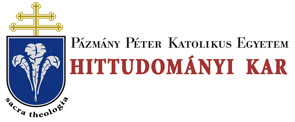Folia Theologica et Canonica 6. 28/20 (2017)
IUS CANONICUM - José Miguel Viejo-Ximénez, Raymond of Penyafort decretalist
RAYMOND OF PENYAFORT DECRETALIST 127 From the Compilano antiqua prima (c. 1189-1191), the index for the compilation of the decretals was well established15. Raymond preserved the division in five books -iudex, indicia, clerus, connubio and crimen- and received all the titles of Bernard’s collection with only one exception: De sobole suscepta ex secundis nuptiis (/ Comp. 4.15). He borrowed another twenty-nine titles from Compilano secunda (12), tertia (16), and quarta (1), and added five entirely new ones: De officio iudicis (X 1.32 = Inst. 4.17), De litis contestatione (X 2.5 = Cod. Just. 3.9), De custodia eucharistia chrismatis et aliorum sacramento- rum (X 3.44), De calumniatoribus (X 5.2 = Dig. 3.6. and Cod. Just. 9.46) and De infantibus et languidis expositis (X 5.11 = Cod. Just. 8.51 ). When selecting the decretals, Raymond seemed quite conservative: 90 percent of his collection consists in a compendium and a reorganisation of the texts of the precedent compilations. He added 195 newly formulated chapters under the name of Gregory IX (10 percent). Going further than Gregory’s authorization, he altered the text of the pope’s predecessors: not only did he erase all that was repetitious, superfluous, contradictory, or verbose, but he also made excisions, interpolations, or alterations of words that sometimes reflected controversies of interpretation in the Compilationes antiquae that arose in the schools*. It is not possible to determine the length of Raymond’s stay at the Roman Curia, nor the reasons of his return to Barcelona. Gregory IX granted absolutions and remissions or imposed canonical penances (by means of) «per (dilec- tum) filium Fratrem Raimundum (cappellanum et) penitentiarum nostrum» in February, May, June, October and November 1234'17. Before the end of the year, Raymond selected six decretals of the «nova compilatio» (i.e. the Liber Extra) that talked about excommunication, simony and usury, and collected them to help his «Veneralibus et carissimis Patribus et Fratibus» in the order to administer the sacrament of penance18. Still, in 1234 Gregory IX was asked by the prior of the Dominicans and the minister of the Franciscans Friars, both established in Tunisia, about some practical issues related to the daily coexistence between Christians and Muslims in this kingdom. Once more, the pope turned 35 * * 38 35 Cf. Friedberg, Ae„ Quinque Compilationes Antiquae nee non Collectio Canonum Lipsiensis, Lipsiae 1882; cf. Pennington, K., Decretal Collections 1190-1234, in Hartmann, W. - Pennington, K. (ed. ), The History of Medieval Canon Law in the Classical Period, 293-317. Cf. Horwitz, S., Magistri and magisterium: Saint Raymond of Penafort and the Gregoriana, in Escritos del Vedat 7 (1977) 209-238. Horwitz, S., Reshaping a decretal chapter: Tua nobis and the canonists, in Pennington, K. - Somerville, R. (ed.), Law, church, and society: Essays in honor of Stephan Kuttner, Philadelphia 1977. 207-221.-,7 Cf. Rius Serra, J„ Diplomatario, nums. IX, X, XI, XIVc and XV. 38 The six decretales are of Gregory IX, none have a date and none were edited by Auvray. These are X 5.39.54 Quum voluntate, X 5.3.45 Si quis ordinaverit, X 5.19.19 Naviganti, X 5.27.10 Si célébrât, X 5.39.56 Duobus collata and X 5.3.46 Mandato nostro. Edition of this short collection known as Sex decretales fratrihus ordinis preadicatorum transmisse: Díez, A. (ed.), Decretales novae Sancii Raymundi a Pennaforte, in Claretianum 12(1972) 347-360.
